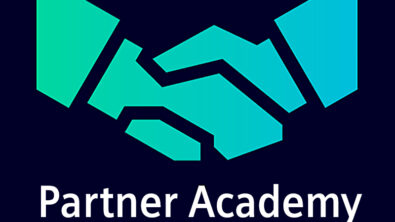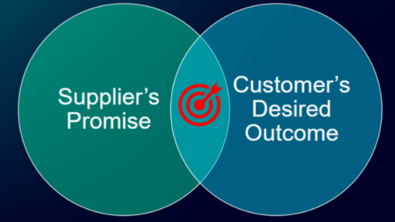Breakout of the partner “type” silos! Enable them by motion
Partners are leading the transition to XaaS, expanding their value to B2B customers, so why are vendors still enabling them by type? Channel, VAR, solution partners, global systems integrators, resellers, OEMs, value-added providers, consultants, integrated solution providers, service providers. Wrong. Antiquated. Gone. Hey vendors, let’s give partners the credit they deserve.
For years, major partner ecosystems put multiple partner segments under one (very large) umbrella. But under that golf umbrella, the programs or enablement for the partner types remained vastly different with independent leaders, different enablement professionals, even different partner management personnel with widely varying skill sets.
Then XaaS happened.
Partners move faster than vendors
Consider an extensive mid-market, from $10K up to 1 billion in revenue for customers in the highly active B2B space. Partners moved fast – adjusting their operations and financial model and negotiating new terms with their vendors. Then, they expanded their capabilities – vastly.
Sales-oriented solution providers developed their training and services capability. A wide range of technically-oriented partners leveraged low-code to build value-based apps for their customers. Systems integrators began to focus on expanding (read: selling) to develop their practices, and almost all partner types are working on nailing customer success.
So, are vendors going to enable partners by type? Why? It’s limiting. Vendors find that to adjust to the new environment, it’s vital to stop the segmenting! As a recent Deloitte article points out, “embracing and extending partner ecosystems” is one approach organizations can use to take bold action to thrive in the future.
Partners can no longer be put in a box; all the lines between partner types are blurred. The modern way to drive partner success “as they are” is through offering broad training, development and enablement that partners (all partners) may need and let them consume based on their business. What we see is that partners consume different types of training and enablement at different times, based on:
- maturity level in the transition to XaaS – both the partner organization and the vendor
- which job function whether finance/operations, selling/marketing or customer success
- technical development with low code and the ability for partners to build relevant apps based on customer needs
- services competency in a XaaS environment with faster delivery, business process analysis and execution
Vendors have become too prescriptive in their enablement efforts, given partners are moving faster to serve their customer’s needs in a XaaS model.
Partner development = customer success
Partner development, training, and enablement are figuratively and literally equating to customer success. As partners have moved to build out essential functions, we notice that progressive vendor programs are moving to consolidate their efforts (read: no “types”) and offer their best training and enablement through critical categories, including:
- XaaS transition training
- onboarding of new partners and new partner personnel (all types)
- sales development
- presales development with technical depth and virtual demo capabilities
- digital marketing capabilities
- customer success development, KPIs / Customer Health Index training, playbooks/templates
- professional services development, capabilities, and business process assessments
Shorter modules: 95% online interactive learning (worth the money spent), easy access with clear communications to a single storefront for consumption and multiple ways for any partner to find what they need when they need it – that’s the answer.
Significant difference: partners are no longer limited or steered toward certain enablement based on the vendor segment. It’s open, and what they absorb is based on the market, the partner’s customers and their business maturity.
Models matter: partners operate in sell, build and service motions vs. types or segments. Any partner may be executing one or more of those motions with customers and desperately need their vendors to support those models.
As Allan Adler of Digital Bridge Partners states, “The priority today is thinking about partners based on their function, which speaks to how they build, market, sell, support, or manage shared customers.”
To reason over this new approach, look at how partner enablement is executed in your organization today – with a widened lens – across all partner types. How can it be done more effectively based on the primary partner motions and need to consume support? The key is to act, begin and take a step toward consolidated practices, without segments, to match the market.
Enable accordingly
At Siemens Digital Industries Software, we work with our partners’ key business drivers and hone skills, competencies and processes based on contemporary practices, customer and market demands. Working with our professionals and partners led us to embrace and invest in this new training, development and enablement approach.
Jason Watkins, Vice President of Global Partner Enablement and Productivity, has over 20 years of experience in sales management consulting and technology vendor leadership roles. His primary focus is on multi-channel profitable revenue growth and, most recently, on the development and growth of the global solution partner ecosystem.
Comments
Leave a Reply
You must be logged in to post a comment.



A highly visionary article on which the Siemens partner ecosystem GTM strategy is fundamentally based. A strategy founded on primarily meeting customer expectation in a dynamic and rapidly changing marketplace; and then equipping our partners according to their core function – sell, service or build to develop closer and stronger relationships with their customers to improve lifetime business value by leveraging Siemens industry-leading technology.
What a great article. This is the direction all software vendors need to be heading. Xaas and outcome-based selling requires partners to adapt and change directions quickly. Enable them with the content to expand their sales, marketing, pre-sales, customer success, and services practice while giving them the freedom to consume the content as they grow. I have worked in the software industry for over 12-years and can honestly say that the vision of Siemens is a differentiator over the competition.
Fantastic blog post that prompts us to think about and widen the lens of how we view, manage, and develop partner relationships by capability and skill set. Enterprises are developing digitalization strategies to allow them maintain their industry leading positions and rely on partners for solution based outcomes in order to achieve their business goals. Partners must expand core skillsets and adjust their go-to-market strategy in order to succeed. But partners are an extension of a vendor’s business, and enablement programs must evolve to align with market trends, demands, and overall partner success. Siemens is establishing themselves as a market leader by reframing the way they manage, develop, and support partners leveraging the strategies referenced in this article.
Excellent insights, Jason … especially on 2 points:
– Partner labels age out faster than the programs vendors use to manage the relationships. Rather than trying to label partners, we should begin by diagnosing their business by 4 main factors: what they do / who they do it for … how they make money / what they specifically make margin from … what capabilities / capacity they possess … and what their intentions for growth / ability to achieve are. This isn’t a static classification — any of those factors can change (for the better or worse) in on any given day. Have they hired a new resource? Has a key employee left the business? Has their financial situation changed? Has the leadership made a strategic decision to change direction? As with any business partnership, the reasons we get into business with someone are only relevant if the partnership serves the business goals and resources of each partner. Managing partners is dramatically more productive when we set aside labels and get focused on business.
– Partner success is built on precisely the same model as customer success … because they goal is not to win a single transaction but to build a long-term recurring revenue relationship that both parties eagerly wish to continue. The more we learn about the sales model at the heart of the subscription / recurring revenue model the more it feels familiar: Land (Recruit / Onboard) … Adopt (Enable / Sell) … Expand (Certify / Grow) … Renew (Partner Agreements / Business Plans). And in exactly the same way that vendors engage with a customer, the most effective approach to a partner relationship is to admit that the first transaction should be fast / easy / inexpensive … and then serve as the foundation for adoption / expansion / renewal. Believe it or not, just as customer’s do not think of themselves simply as people who buy a vendor’s products, channel partners also do not think of themselves as only an extension of someone else’s business … but as independent, relevant, real-world businesses that exist for the purpose of achieving their own business objectives (not just help hit someone else’s quota). As with LAER subscription sales, the entire concept of sustained sales success is based on one essential factor: what does the customer actually want to achieve? As Jason says very clearly: if vendors do not begin by asking what their partners want to achieve (rather than just what the vendor needs to achieve), they can’t build any long-term commitment or predictable performance.
Bottom line: it’s not enough to acknowledge that partner business models are shifting. Vendors must change their recruiting messages, their management practices, and their basic program architectures to not just accommodate new partner types … but to embrace and celebrate them with metrics that focus on partner success.
Ryan,
Great points on alignment across the program, from targeting and recruiting through sunset. While the blog focused on enablement of all partner types, your spot on about focusing on the partner’s business first then ensuring complete alignment in all we do.
Reminds me of a story an American football coach once said after being hired by a major university: “My focus will be on alignment across our program. If a player has to be on time for practice but not on time for class or other school commitments, that’s misalignment. When all know “who we are” and understand how they may be successful in our program based on their talents, we’ll all be successful.”
Spot on article Jason! The notion of partner types blurring really resonates the deeper we go with our traditional consultants and systems integrators.